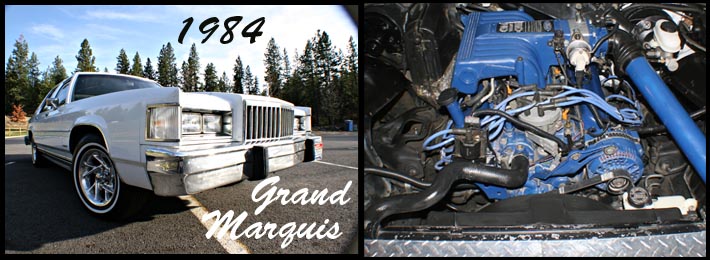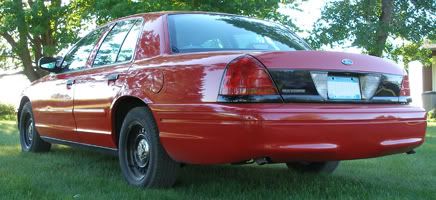I figured I'd toss together something that explains basically how the climate controls work, and how to troubleshoot and repair common problems. This applies mostly to box models since I don't know jack about the climate controls on the aero.
Firstly, there are 2 different systems in use, standard climate control, and automatic climate control (often referred to as ATC). Identifying them is quite simple. Automatic climate control head units say "Automatic Climate Control" on them and the temperature slider has numbers. Non-ATC head units simply have hot and cold markings.
The inner workings of both systems are pretty much the same. Temperature control is done via a blend door. One side of the door has the heater core box, the other side has the AC evaporator. The door can be full hot, full cold, or somewhere in between. There is always engine coolant flowing through the heater core.
Air is pushed by the blower through the box with the blend door, and past that it goes into the air plenum. In here there are a couple of doors that direct heat to the floor, dash, or defrost or whatever mix is selected. These doors are controlled by vacuum motors attatched to the side of the plenum. This whole mess is located directly behind the center of the dash, if you look behind the radio area, the vacuum motors are probably visible. In the event of a loss of engine vacuum, the doors are positioned in such a way that all air goes out the defrost vents.
The big difference between ATC and non-ATC is what controls the blend door. In a manual system, its done through a cable connected to the temperature lever. On the ATC system, it is done with a vacuum motor. Vacuum to this is controlled by the interior temperature sensor. This device is located above the glove box. It samples cabin air, and adjusts the vacuum on the blend door to get the desired temperature. Inside the temperature sensor there is a rubber diaphragm, a bi-metallic plate, a spring, and a small cam. The bi-metallic plate warps with temperature, allowing more or less vacuum through to the blend door motor. The spring is controlled through the temperature lever, more tension = more warping. In the event of vacuum loss, the blend door motor goes to full hot.
stand by for the next installment which will involve fan motor operation and troubleshooting.
Firstly, there are 2 different systems in use, standard climate control, and automatic climate control (often referred to as ATC). Identifying them is quite simple. Automatic climate control head units say "Automatic Climate Control" on them and the temperature slider has numbers. Non-ATC head units simply have hot and cold markings.
The inner workings of both systems are pretty much the same. Temperature control is done via a blend door. One side of the door has the heater core box, the other side has the AC evaporator. The door can be full hot, full cold, or somewhere in between. There is always engine coolant flowing through the heater core.
Air is pushed by the blower through the box with the blend door, and past that it goes into the air plenum. In here there are a couple of doors that direct heat to the floor, dash, or defrost or whatever mix is selected. These doors are controlled by vacuum motors attatched to the side of the plenum. This whole mess is located directly behind the center of the dash, if you look behind the radio area, the vacuum motors are probably visible. In the event of a loss of engine vacuum, the doors are positioned in such a way that all air goes out the defrost vents.
The big difference between ATC and non-ATC is what controls the blend door. In a manual system, its done through a cable connected to the temperature lever. On the ATC system, it is done with a vacuum motor. Vacuum to this is controlled by the interior temperature sensor. This device is located above the glove box. It samples cabin air, and adjusts the vacuum on the blend door to get the desired temperature. Inside the temperature sensor there is a rubber diaphragm, a bi-metallic plate, a spring, and a small cam. The bi-metallic plate warps with temperature, allowing more or less vacuum through to the blend door motor. The spring is controlled through the temperature lever, more tension = more warping. In the event of vacuum loss, the blend door motor goes to full hot.
stand by for the next installment which will involve fan motor operation and troubleshooting.













Comment